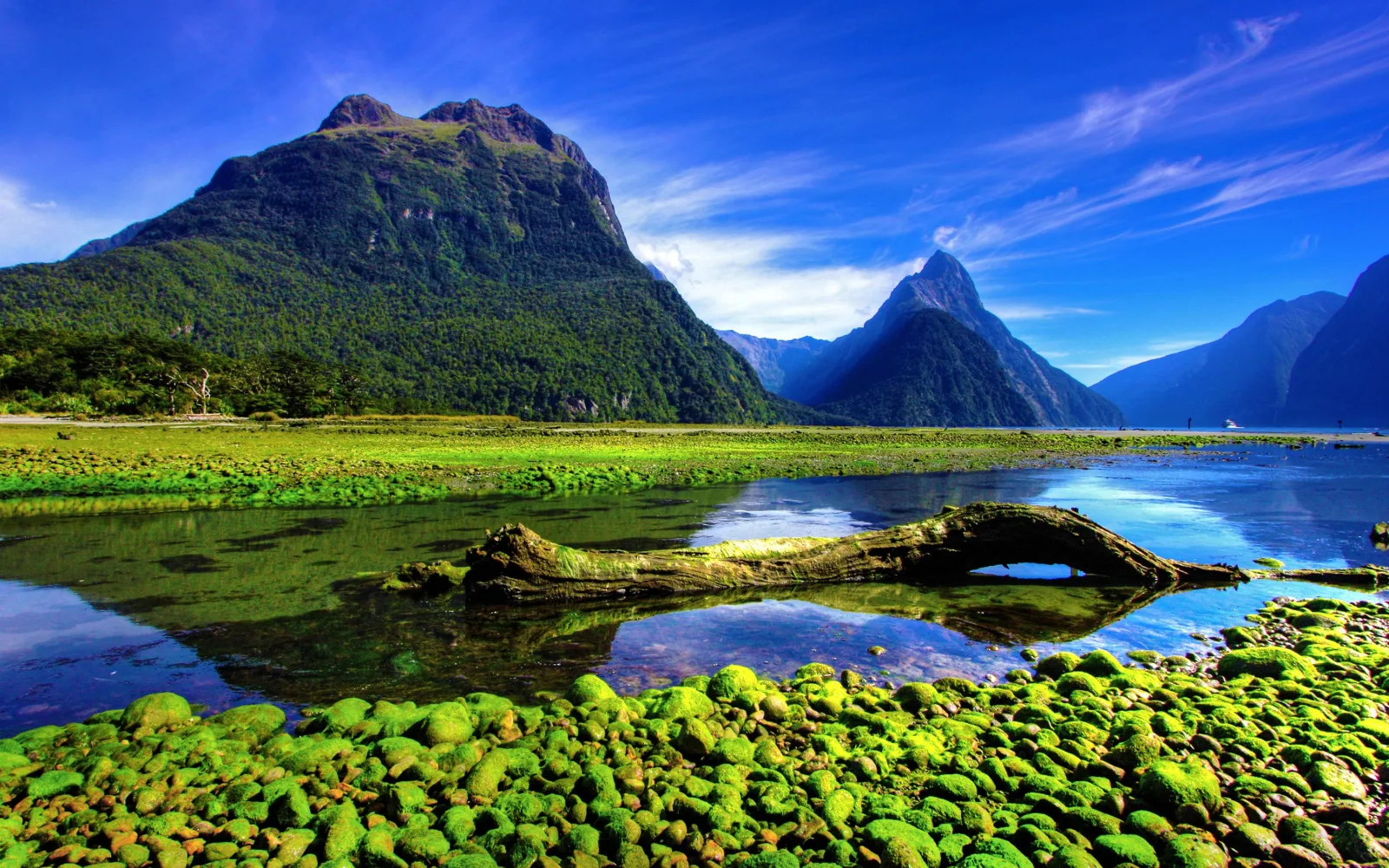As anyone who’s seen the Lord of the Rings movies knows, New Zealand has some of the most stunning landscapes in the world. The country has mountains, lakes, beaches and fjords, and they’re not confined to any single part of the two large islands.
It’s no wonder that so many people have moved New Zealand to the top of their dream vacation list. So, you may wonder, what does it cost for trip to this scenic wonderland?
The country has a reputation for being expensive, and it certainly can be. It’s a long flight from North America, and once you’re there, you’ll probably want to do more than just look at the scenery.
New Zealand is a land of adventure that offers everything from kayaking to ice climbing to scenic cruises to bungee jumping, and most visitors will want to enjoy one or more of those activities.
The price of your New Zealand escape depends on when you visit, where you stay and how many of the recreational opportunities you choose to enjoy. Read on for some general cost information and some pointers about planning your trip.
Average Trip to New Zealand Cost in 2025
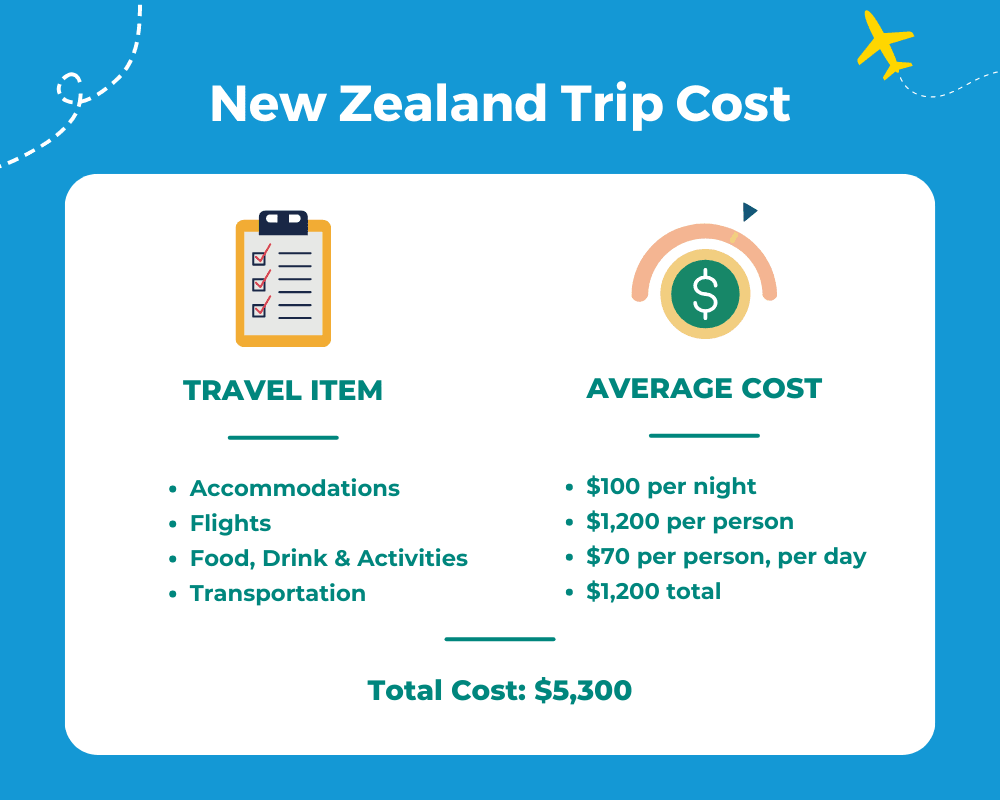
A seven-day vacation for two, staying in comfortable accommodations and experiencing several New Zealand adventures, costs around $5,300:
- Average Accommodation Cost: $100 per night
- Average Flight Cost: $1,200 per person
- Food, Drink & Activities: $70 per person per day
- Transportation: $1,200
- Total Cost: $5,300
This may seem like a lot, but when you’re going that far for what may be the vacation of a lifetime, most people are willing to spend enough money to enjoy the full experience.
You can save money by avoiding restaurant meals, finding cheaper rooms and bypassing high-cost activities, but this is a realistic figure to enjoy all the great things New Zealand has to offer.
The most expensive time to visit is during Southern Hemisphere summer, especially from December through mid-February. A cheaper time to visit is late May, which is toward the end of autumn on the bottom of the globe.
Most travelers will choose to rent a car and stay in motels. A popular alternative is the campervan, which will make you a member of a niche camping group, meeting like-minded travelers and seeing the country from a different point of view.
Once they’ve gone such a long way, many visitors will choose to stay 2-3 weeks. This allows for more relaxed sightseeing as opposed to a special outing almost every day.
New Zealand Trip Cost: Average by Item
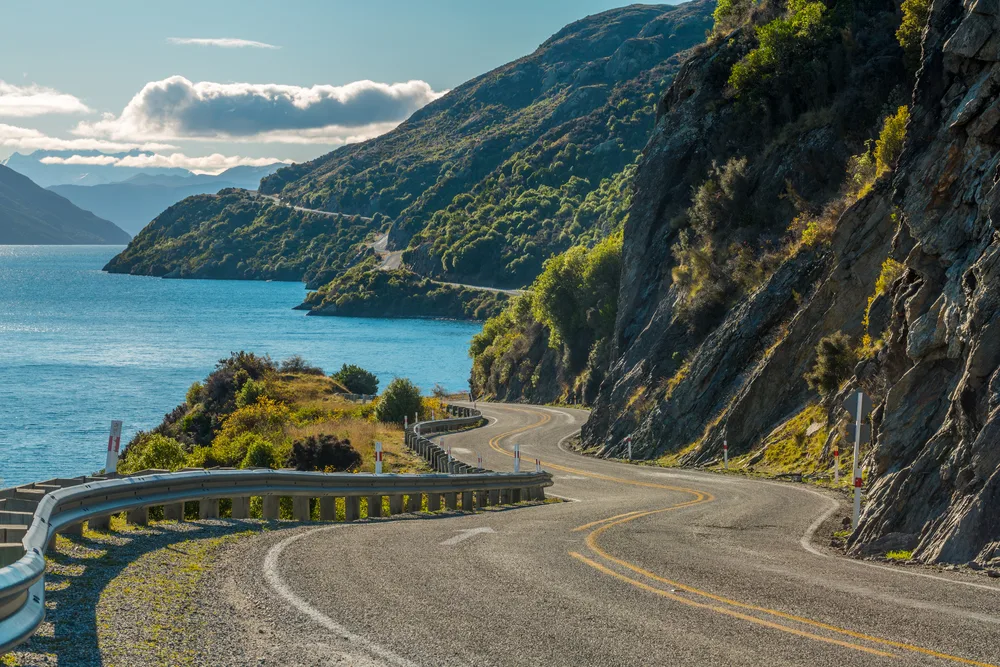
Naruedom Yaempongsa/Shutterstock
When you are pricing out your getaway, it helps to have some idea of what your ideal vacation looks like. For instance, if you are all about the ease of using a pre-built itinerary, you are likely to spend more than a scrappy DIY traveler who delves into every area.
Consider each of the categories below so you can decide where you want to spend the most and where you can save.
Accommodation Costs
If you’re traveling New Zealand by car, you’ll find hundreds of motels throughout the country. Around the cities and larger towns, you can often get a room without booking ahead, though advance reservations are always good if you know about where you’ll be.
A survey of 1,700 hotels showed average prices in the $90-$100 range. Luxury accommodations are around $170, and budget rooms average around $70. New Zealand offers hostels for or those who are traveling as cheaply as possible.
A bed in a dorm room might run $17-$25, while a more private room will cost about $50-$60. If you’re traveling by camper van, camper fees tend to be in the $50-$60 range.
Flight Costs
New Zealand is about as far as you can get from North America, and ticket prices reflect that. While Kayak reports round-trip flight for as little as $500 during off-peak time, such bargains are hard to find.
You’re much more likely to pay over $1,000, especially if you’re flying from the east coast.
New Zealand’s two largest airports are in Christchurch and Auckland. Very few U.S. to New Zealand flights are non-stop. The best rates are found by booking at least four weeks in advance.
Some of the widely-used American airports for New Zealand flights are JFK, Dallas-Fort Worth, Seattle Tacoma and Los Angeles International. May is the cheapest month to fly, and November through January are the most expensive.
Food, Drink & Activity Costs
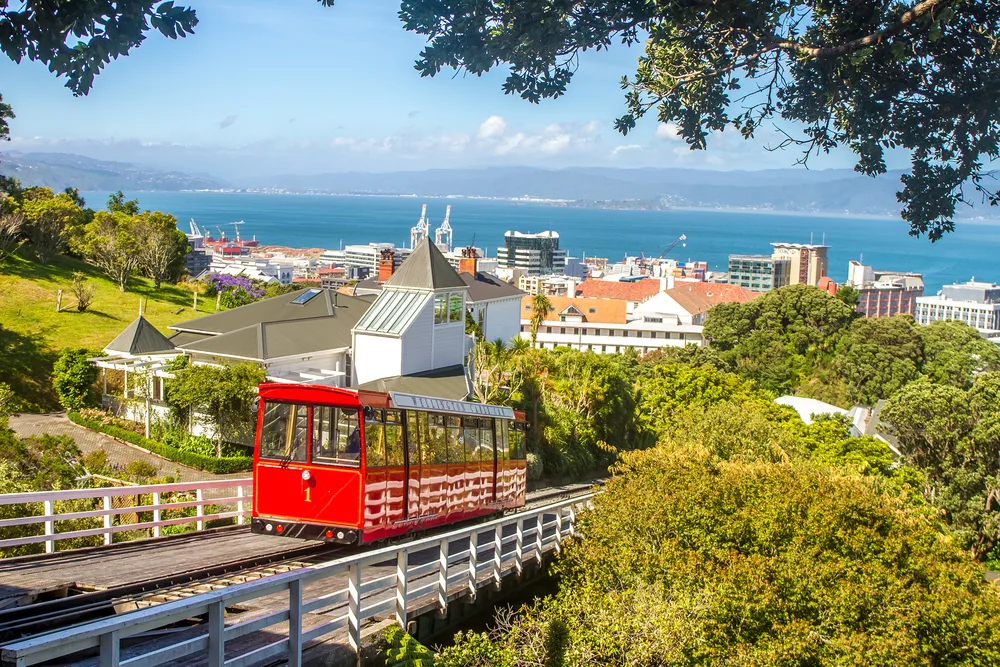
Elena Yakusheva/Shutterstock
Cuisine in New Zealand is similar to that of Britain, and just about any town offers classic English pub fare such as fish and chips. In the cities, there’s fine dining as well as the broad range of ethnic food that is becoming pervasive worldwide.
There are budget dining options, such as eating at fast food restaurants, purchasing street food and buying from grocery stores. PAK’nSAVE is the bargain chain.
A sit-down dinner might run $20-$25 at an ordinary restaurant or up to $50 at a fancier one. Lunch might be $10-$20. You can always be on the lookout for food trucks and takeaways. People tend to tip from five to 15 percent.
Alcohol is expensive. You might pay $8 for beer or $15 for a cocktail. Activities can be costly, but, for most people, it wouldn’t be a trip to New Zealand without them.
In the cities, you can see quite a bit just by moseying about. Auckland has Viaduct Harbour and Mission Bay as well as an assortment of museums. Christchurch has a distinctive English architecture and layout. Both are good spots to spend a day or two.
Automobile tourists might consider the Thermal Wonderland at the Okataina Volcanic Center, the volcanic Tongario National Park on the North Island or Fjordland on the South Island, which contains some of the country’s most spectacular scenery.
Most people will want to go for at least one experience that’s a little out of the ordinary. For those who like to observe, there are sky gondolas, island tours and whale watching, with prices anywhere from $30-$150.
Middle Earth fans won’t be satisfied without a tour of Hobbiton, in the $50-$60 range. Most active tourists will want to sample at least one of the adventure opportunities.
These include kayak tours, jet boating, bungee jumping, skydiving, glacier hiking, shark cage diving and whitewater rafting. These have different levels of inherent danger, and some present a real possibility of getting hurt. Be aware of your risk tolerance.
The cost for activities vary greatly from one traveler to the next. You can have quite a good sampling for $250-$500, but some people will decide that this is a once-in-a-lifetime trip and spend more.
There are passes such a FlexPass that include some day trips. One interesting food-and-activity option is an evening of Maori culture on the north end of the North Island.
This can cost $150 or more, but it includes a feast prepared in an earthen oven and several hours of immersion in the Maori way.
Transportation Costs
There is some public transportation in New Zealand, but it doesn’t reach all of the places that most tourists want to see. You can still visit quite a bit of the country on tour buses and intercity buses. Book in advance to get the best price.
A ticket bought at the last minute might cost several times as much. Another choice is Kiwirail. Trips can be from $50 to $120, and you’ll do well to plan out a route with costs in mind.
With the train, you’ll see some impressive geography. Most travelers will rent a car. According to Kayak, and average rental is about $60 per day. Gas is expensive and will cost $6 per gallon or more.
There are gravel and dirt roads in the country, so consider a four-by-four if you plan to venture far from the cities. Camper van rental, as you’d expect, runs a bit higher. Prices vary radically depending on vehicle size, time of year and the associated demand from tourists.
Many vehicle rentals include insurance, but be on the lookout to ensure that yours does. If you like to wheel and deal, you can buy a car when you arrive and sell it before you leave.
There’s a big used vehicle market, and ownership change is simple. Most people want to visit both islands, and that involves a ferry ride that you’ll have to take into account.
There are up to five ferries a day, from more than one vendor, running from about 2:00 AM to 8:00 PM. Nighttime rides cost less, but the scenery is marvelous and you’ll want to at least once see Cook Strait in the daylight. You have to pay for passengers as well as the vehicle.
Tickets often sell out, so book in advance. They’re also cheaper that way. You might pay anything from $120 to $200+ each way, depending on the size of your vehicle.
Things to Consider
Here are a couple things you should know before you take your flight to New Zealand:
- New Zealand has strict biosecurity laws. There are stringent regulations around what you can and can’t bring into the country. If you have plants and foods, don’t assume you can carry them in with your luggage.
- When you land in a New Zealand airport, pick up an “Arrival – New Zealand” magazine. It contains discounts that may save you some money.
Frequently Asked Questions
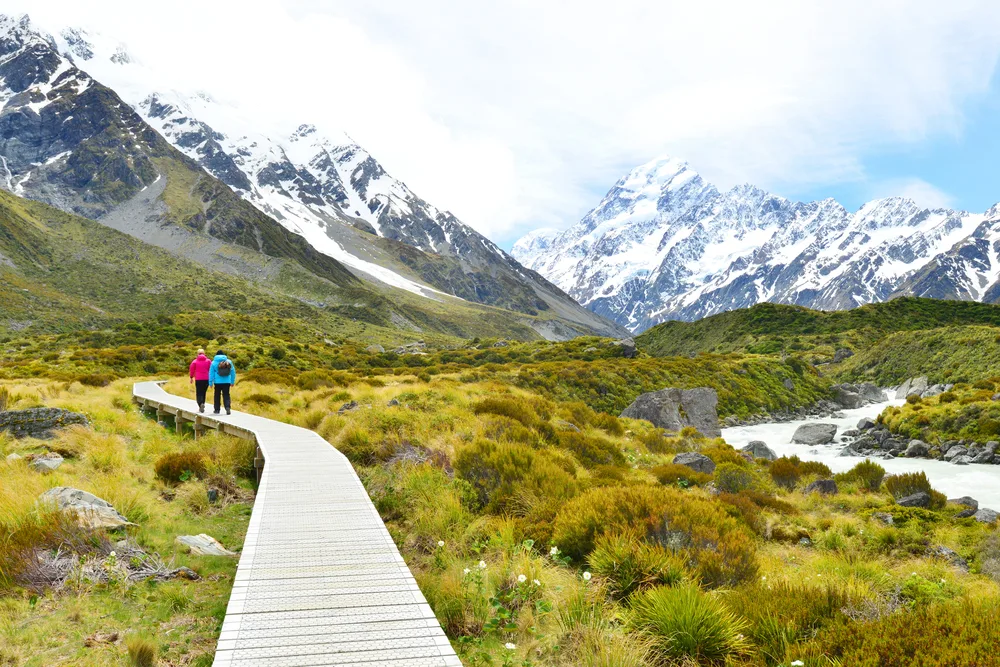
i viewfinder/Shutterstock
Is New Zealand tourist friendly?
Yes! New Zealanders, who like to call themselves Kiwis, are laid back and always willing to talk to tourists, asking where they’re from and making recommendations.
How long is enough to visit New Zealand?
Most tourists will choose to spend 2-3 weeks. A one-week vacation is still enjoyable, but you’ll have to pick and choose from what New Zealand has to offer.
Can you drink tap water in New Zealand?
Yes. New Zealand employs a sophisticated filtration system and a world-class distribution system. It’s among the safest water in the world.
Does New Zealand follow American English?
New Zealand English derives from British and Australian speech, and the accent is more like Australian. However, a number of distinctly American words have found their way into Kiwi vocabulary.
Which side of the road does New Zealand drive?
The left, like Britain and Australia. There are many roundabouts, and you need to “check right” when you enter one.
Is hitchhiking popular in New Zealand?
Yes. Hitchhiking is legal and relatively safe, and it’s popular among backpackers.
Why are people from New Zealand called Kiwis?
The kiwi, New Zealand’s flightless bird, is the symbol of the country. In the early 20th century, the term began to apply to the people as well.
So, What Is the Average Cost for a New Zealand Trip?
For a one-week vacation for two:
| 🛎️ Average Accommodation Cost | $100 per night |
| ✈️ Average Flight Cost | $1,200 per person |
| 🍽️ Food, Drink & Activities | $70 per person, per day |
| 🚕 Transportation | $1,200 total |
| 💲 Total Cost | $5,300 |
New Zealand doesn’t have to be this expensive. This figure includes a generous sampling of tours and adventure outings while visiting both islands. A less ambitious trip focusing on one of the islands could cost thousands less.
So, with so much to see and do, and the ability to travel to this picturesque destination on all types of budgets, what are you waiting for — book your trip today and experience for yourself all that New Zealand has to offer. Happy travels!



